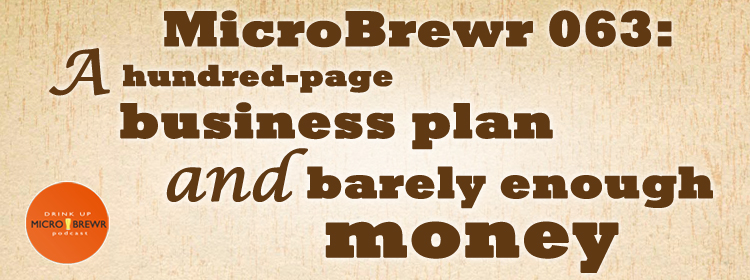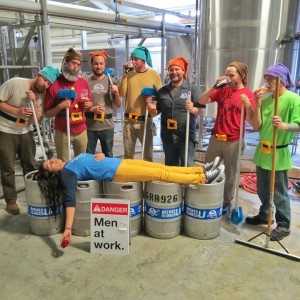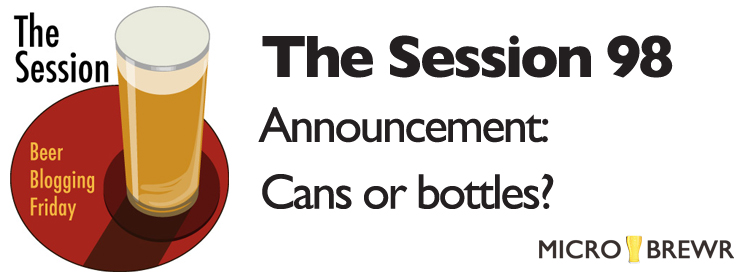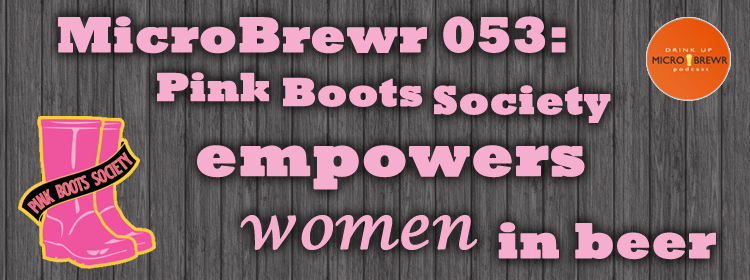 The data for this post is kept current here.
The data for this post is kept current here.
This is my entry to The Session 98 that I announced last week. Stay tuned for a round up of posts from other bloggers answering the same question: Cans or bottles?
Read the roundup: The Session 98 roundup: Cans or bottles?
The Session, a.k.a. Beer Blogging Friday, is an opportunity once a month for beer bloggers from around the world to get together and write from their own unique perspective on a single topic. Each month, a different beer blogger hosts The Session, chooses a topic and creates a round-up listing all of the participants, along with a short pithy critique of each entry. (Find more info on Brookston Beer Bulletin.)
It looks like the host slot for the May session is still open, so if you’re interested in hosting The Session 99, drop a note to Jay (.) Brooks (@) gmail (.) com or Stan Hieronymus of Appellation Beer. His e-mail is stan (@) appellationbeer (.) com.
Sign up for the email list: Sign me up!
Cans or Bottles? 27 industry experts reveal their preference
Cans or bottles? I ask this question of every guest on MicroBrewr Podcast. I think it’s an interesting study into both industry and consumer trends.
The craft beer industry is neat, in that the producers are often consumers as well. When a brewery owner answers this question, she gives her perspective not only as a manufacturer of an alcoholic beverage product, but also as a consumer of beer.
MicroBrewr is about how to start a brewery. A bottling line or a canning line is a substantial financial investment. So this question is a significant consideration to anyone starting a brewery. It brings varied and interesting answers.
At episode 14 of MicroBrewr Podcast, I started asking each guest the simple question, “Cans or bottles?” We’re now at episode 58, so we have a decent sampling of industry insiders.
The answers below were culled from MicroBrewr podcast episodes 14 through 58. With 44 respondents (one of the episodes was myself), the overall results were as follows.
| Preference from guests on MicroBrewr podcast |
Count |
Rate |
| Cans |
19 |
43% |
| Bottles |
12 |
27% |
| Both |
12 |
27% |
| Aluminum bottles |
1 |
2% |
Cans are preferred by 43 percent of the respondents, while bottles are preferred by 27 percent. That’s a 16 percent margin.
Furthermore, 27 percent of people could go either way. If you take the respondents who said they don’t prefer one over the other, and add them to the ones who prefer bottles outright, that’s 54 percent, beating out can fans by 11 percent.
Yet, if you threw a party with only canned beer, you’d satisfy 70 percent of your guests (43% + 27%). Whereas if you provided only bottled beer, just 54 percent of your guests would be happy (27% + 27%).
One respondent threw a curve ball. Philipsburg Brewing Company says that they are planning to package their beer in aluminum bottles.
“The canning machines… are awfully hard on beer,” said Mike Elliott from Philipsburg Brewing Company. “We’re looking for a away to utilize the convenience of aluminum, but get away from the problems with the canners. The machines for bottling on a small scale, like we need, have been much longer in development. Whereas the canning process is still pretty new and they’re still kind of refining the technology.”
I’ll continue to tabulate the answers.
So check here for the latest results.
In meantime, I was eager to dig in deeper. So I looked at the answers more closely.
The answers are affected by opinion
The first thing I noticed was that the answers seemed largely based on opinion. Simply put, people are biased and they have strong opinions about this topic.
From most of the guests, I could hear a change in the tone of their voice when they answer this question. It seems like their opinion is swayed by personal perception.
Oftentimes I perceived even a raised voice or an excited tone.
“Oh cans, all the way,” says Zachary Typinski from Neighborhood Brewing Co.
“Cans!” exclaims Nigel Askew from Horsefly Brewing Company. “Absolutely! There’s no competition.
“Cans, no doubt,” says Paul Benner from Platform Beer Co.
“Cans, totally 100 percent,” says Matt Katase from The Brew Gentlemen Beer Company. “I cannot wait until we start putting beer into cans.”
I do admit, this question is the first in a series of what I call “happy hour” on the show. The happy hour questions are meant to be light, friendly and informal. This could explain the change in the tone of their voice.
Some of the guests realized that their answer was based simply on opinion.
“I prefer bottles,” says Ted Sobel at Brewers Union Local 180. “I don’t know, I just prefer glass. There’s something I like about glass. Cans, I don’t know… cans remind me of cheap tin beer for some reason.”
“I have no objection to cans. I have no objection to bottle,” says Kyle Roth from Ferndock Brewing Co. “Certain beers I would rather have in a can. Take it on a boat, take it on the golf course. Some I would rather have in a bottle sitting on the dinning room table. That’s just my preference, I guess.”
“I actually used to collect beer cans so I had kind of a nice soft spot for cans,” admits Shaun O’Sullivan from 21st Amendment Brewery.
Modern cans for packaging beer are different from the their predecessors. New technologies have improved the packaging. Some guests seem to like cans because it’s a new thing.
“I gotta says cans,” says Randal Denver from Yards Brewing Company. “I think that’s the future of the industry.”
“I’m always looking on the newer and greater sort of things,” admits Audra Gaiziunas from Brewed For Her Ledger, “and I really like cans.”
“The new wave is cans,” says Brett Tate from Dust Bowl Brewing Company. “It seems to me that if you don’t do both [cans and bottles] in the future, you’re probably missing the boat.”
The question is difficult to answer
Several people found the question difficult to answer.
“Both,” answers Nick Ellis from Opposition Brewing Co. “Do I have to pick one?”
For some, it is a downright struggle to pick one packaging over the other.
“Cans,” says Cathy Smith from Philipsburg Brewing Company. “Or bottle!” she quickly changed her answer. “Or what? Oh, God—I don’t know.”
Mike Elliott was on the same call and he also had a difficult time answering.
“Oh, that’s hard,” he laments. “I love aluminum, but I hate cans. Let’s put it that way.”
For some, the dilemma is even troublesome.
“This is a really challenging question because from a science perspective cans are definitely a superior package,” says Chris Goulet from Birdsong Brewing Company. “But for me… in college and in my early career… it’s interesting because I always associated cans with crappy beer. So I guess I’m kind of personally at a conflict.”
“You don’t want to break glass by the pool,” offers Danny Robinson from Backshore Brewing Co. “Bottles… personally, I enjoy drinking out of bottles. The whole argument of what’s better, I don’t know. Honestly, I’ll take either one.”
“Whoa,” reflects Henry Thornhill from West Cork Brewing Company. “I was listening to Dan Gordon, he described, technically, how superior bottles were because less contact with the air. Up until that, I was going, ‘Cans, that’s the way to move forward,’ but now I’m re-assessing.”
Tiffany Adamowski from 99 Bottles beer store was politically correct in her answer.
“I almost always go bottles, just because there’s more variety,” she calculates. “But for storage, I prefer cans.”
Environmental stewardship affects the decision
Many guests cited the environmental benefits of cans over bottles.
Nigel Askew pointed out that aluminum cans weigh much less than glass bottles. Lighter weight, means lower transportation costs and the associated emissions.
“It’s lighter. Much more environmentally conscious,” he says. “Much more recyclable. Very few recycling places have the ability to crush the glass then re-melt it.”
Besides weight, the size of a can allows for more to be shipped in the same space, which additionally saves on transportation costs.
“It’s more portable in the sense that you can put 110 cases of cans on a pallet versus 70 for glass,” offers Shaun O’Sullivan. “I think 70 percent of all cans are recycled.”
“I also like being able to crush the cans,” says Todd Cook from Boulder Dam Brewing Company, “it makes my recycling thing a lot easier.”
Doing the right thing for the environment often translates to benefits for the bottom line.
“[Cans are] more environmentally friendly,” says Audra Gaiziunas. As an accounting consultant for breweries, she’s constantly thinking of the bottom line. “They’re not rising at the cost that glass is. I like them for transportation.”
Sign up for the email list: Sign me up!
Product longevity affects the decision
Many people spoke about shelf life of their product.
“Technically speaking, cans are a superior packaging for beer,” says Nick Ellis. “There’s no argument. It protects the beer more than bottles.”
“We’re in bottles right now, 100 percent,” says Rich Weber from Sierra Blanca Brewing Company. “I think, ultimately I may end up [putting my product] in cans. I do like glass for my product, though. But no headspace, very low air, no light is appealing as well, in the cans.”
“Until 6 months ago, when I started doing serious research, I would have said bottles,” says Myles Stone from Borderlands Brewing Co. Myles knows about research, he started the brewery when he was in his second year of medical school. “Cans are like little, mini kegs. They block out all the light, they block out all the oxygen. They’re really shelf-stable.”
And Myles’ affinity for cans goes beyond the research to practical reasons.
“If you drop it, you pick it up, versus getting the mop if you drop a bottle,” he says. “You can take them to the beach, you can take them on the trail. I’m a big, big fan of cans.”
But there’s conflicting data. A few guests on the podcast have given statistics about how either cans or bottles are superior packaging.
“I was just talking to our lab guy their other day,” says Mark Carpenter, Brewmaster at Anchor Brewing. “The cans have the lowest air count. So the beer is going to last in cans. That’s keeps the brewer happy.”
Then there’s the argument for bottles, too.
“You can’t put a vacuum on a can. You can put a vacuum on a bottle so a double pre-evacuation filler is going to get you the best beer quality ever. That gets you oxygen content under 50 parts per billion of dissolved oxygen [in the bottle],” asserts Dan Gordon from Gordon Biersch Brewing Company. “So there’s minimal contact of any air with a beer when you’re filling a bottle.”
“That’s not the case with the can,” he continues. “With the can you have a large surface area, the top of the can diameter is exactly what’s being exposed to air during the process. And there’s transition between the filling of the can and the seaming of it, to put the top cover on it. So the oxygen content that you can get on a good filler is probably around 60-80 parts per billion. We average in our brewery about 20 parts per billion of oxygen [in bottles]. So the shelf life is much longer in a bottle than it is in a can.”
He doesn’t stop at dissolved oxygen.
“Let’s face it: The cases are sealed. The bottles aren’t going to be exposed to light that much.” The amber glass is also “filtering out a lot” of the light, he says. “And light reaction versus oxygenation, I’ll take light stuck any day of the week.”
Besides lab data from the brewery itself, I can’t help but wonder where the statistics are coming from. Obviously, the canning industry has an interest in making their packaging sound like it’s going to protect the beer more, but the bottle manufacturers have an interest in selling their product as well.
I’m interested to see any studies from an unbiased third party that covers a large sampling on a broad range of equipment.
RELATED: Cans or bottles? Surprising results from two blind taste tests
Portability and accessibility affect the decision
Many guests believe that cans allow their product to go more places.
“Cans, in Florida,” says Justin Stange from 7venth Sun Brewery, which was the first brewery in Florida to can a Berliner Weisse, a very popular beer style there. “We’ve got a lot of outdoor activities where bottles are restricted.”
“It is an outdoor state, so that’s kind of why we’re really researching it,” says Rich Weber in New Mexico. “There’s a lot of hiking, biking, mountain climbing, rafting, things like that, a lot of places that cans can go.”
“In Montana, the can is really popular,” says Mike Elliott, “because you can take a can outside to recreate and stuff.”
“[Cans] are much more easy to travel with,” says Brian Kelly from Elevation 66 Brewing Co. “and less chance for breaking them. So yeah, cans.”
Taking beer into the outdoors might not be such an important issue everywhere.
“I think in America people say how they’re going out and go hiking, and backpacking outdoors, you can take cans. That really isn’t the culture in Ireland,” says Henry Thornhill who co-founded a brewery there. “People drink [from] bottles at parties, barbecues, and stuff like that, but you wouldn’t go walking the hills and then have a can. I guess it’s just a bit more of culture thing, really.”
“In the last few years, there’s been an upsurge in outdoor activities. If you were bringing beer, people might think you’re a bit different, let’s say,” he advises.
I ask for clarification through the nuances of language. “Might think you’re a boozer, huh?”
“Yeah,” he cautions.
Cans still have a stigma
People who prefer cans are usually very enthusiastic about it. Yet there are holdouts for the bottle.
Oftentimes, people who prefer bottles are so confident in their answer and their preference that they don’t feel a need to elaborate.
“Bottles,” succinctly answers Matt Greff from Arbor Brewing Company.
“Myself, a bottle,” says Patty Elliot from Pecan Street Brewing (no relation to Mike Elliott).
“Bottle,” stated Eilise Lane from Scarlet Lane Brewing Company.
I pressed her further.
“You asked cans or bottles,” she laughed. “Bottles.”
Then she explained more. “There’s something about a bottle that just feels right for me. I know cans are great, I drink craft from can and it’s good beer. It’s a way to do it. But for me personally, I am looking forward to bottling. I just feel like it matches what we’re doing.
“When you are a bottle fan you are just a bottle fan,” she concludes.
Customers as well as producers perceive the stigma that cans bear.
“In New Mexico, some breweries are in cans and [some are in] bottles,” says Rich Weber. “Some are doing well and some are not doing well in cans. It’s kind of, you don’t know if it’s the package, it’s what’s in the package, or [simply] the packaging.”
“There’s still that stigma of a can,” admits Erich Allen from Studio Brew. “Case in point: I was standing at an incredible beer store one evening. And I was looking at a bottle of beer. It had the basket and the crown cap with the cork and the whole thing. And it was $32—$32 for a 750-milliliter bottle! And to the side of it was a can. And it was probably 32 to 34 ounces, standing there next to it for $8. Can I justify myself for buying that bottle for $32? Of course I did! On the $8? Well, I went ahead and bought it.”
Then he pauses.
“I got to tell you, the one in the can was just as good!”
And the stigma does seem to be waning.
“When we first started, it was interesting because we talked more about the can itself than the beer inside,” recalls Shaun O’Sullivan who co-founded his brewpub in 2000 and started packaging their beer for distribution—in cans only—in 2006.
“Cans have been hugely successful in the industry,” reports Mark Carpenter. “It’s what the public wants and accepts. Cans certainly seem to be accepted, and we’ve started canning. I think we’re going to see more can—customers like them. I think you’re going to see both cans and bottles around.”
“Once I kind of saw the light,” reveals Shaun O’Sullivan, “like, ‘Wow, this is going to be big,’ when Sierra Nevada, and New Belgium and especially Samuel Adams, I knew once those guys went into the cans, that this package was going to be accepted by beer drinkers and would be around forever.”
Whether packaging your craft beer product or just buying a brew, opinions and perception vary widely.
In the craft beer industry, producers are consumers. Among this set of producers and industry insiders, more people prefer canned beer. As canning technology improves and as the stigma of “cheap tin beer” fades, we’re seeing even more beer in cans.
But does the packaging affect the beer? That’s an important question that also draws varying opinions.
Stay tuned for the next post, where I talk about 2 blind taste tests that I did with friends to find the answer to the question: Cans or bottles?
Join the mail list
Don’t miss other great posts like this one.
Sign up for the email list: Sign me up!























